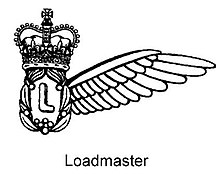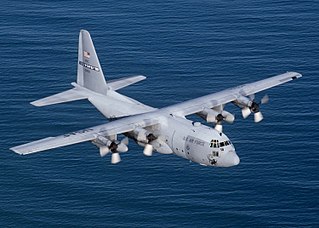
The Lockheed C-130 Hercules is an American four-engine turboprop military transport aircraft designed and built by Lockheed. Capable of using unprepared runways for takeoffs and landings, the C-130 was originally designed as a troop, medevac, and cargo transport aircraft. The versatile airframe has found uses in other roles, including as a gunship (AC-130), for airborne assault, search and rescue, scientific research support, weather reconnaissance, aerial refueling, maritime patrol, and aerial firefighting. It is now the main tactical airlifter for many military forces worldwide. More than 40 variants of the Hercules, including civilian versions marketed as the Lockheed L-100, operate in more than 60 nations.
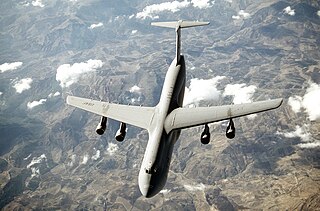
The Lockheed C-5 Galaxy is a large military transport aircraft designed and built by Lockheed, and now maintained and upgraded by its successor, Lockheed Martin. It provides the United States Air Force (USAF) with a heavy intercontinental-range strategic airlift capability, one that can carry outsized and oversized loads, including all air-certifiable cargo. The Galaxy has many similarities to the smaller Lockheed C-141 Starlifter and the later Boeing C-17 Globemaster III. The C-5 is among the largest military aircraft in the world.

Eighteenth Air Force (Air Forces Transportation) (18 AF) is the only Numbered Air Force (NAF) in Air Mobility Command (AMC) and one of the largest NAFs in the United States Air Force. 18 AF was activated on 28 March 1951, inactivated on 1 January 1958, and re-activated on 1 October 2003. 18 AF is headquartered at Scott Air Force Base, Illinois.

An airdrop is a type of airlift in which items including weapons, equipment, humanitarian aid or leaflets are delivered by military or civilian aircraft without their landing. Developed during World War II to resupply otherwise inaccessible troops, themselves often airborne forces, airdrops can also refer to the airborne assault itself.

The 62nd Airlift Wing, sometimes written as 62d Airlift Wing, is a wing of the United States Air Force stationed at McChord AFB, Joint Base Lewis–McChord, Washington. It is assigned to the Eighteenth Air Force of Air Mobility Command and is active duty host wing on McChord. The wing is composed of more than 2,200 active duty military and civilian personnel. It is tasked with supporting worldwide combat and humanitarian airlift contingencies. Aircraft of the 62nd fly worldwide, conducting airdrop training; it also carries out the Antarctic resupply missions.
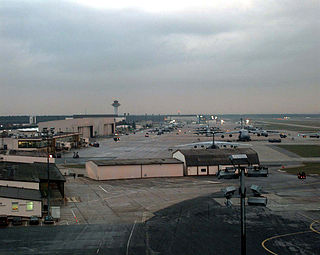
Rhein-Main Air Base was a United States Air Force air base near the city of Frankfurt am Main, Germany. It was a Military Airlift Command (MAC) and United States Air Forces in Europe (USAFE) installation, occupying the south side of Frankfurt Airport. Its military airport codes are discontinued. Established in 1945, Rhein-Main Air Base was the primary airlift and passenger hub for USAFE. It was billed as the "Gateway to Europe". It closed on 30 December 2005.
Weight distribution is the apportioning of weight within a vehicle, especially cars, airplanes, and trains. Typically, it is written in the form x/y, where x is the percentage of weight in the front, and y is the percentage in the back.

The 374th Airlift Wing is a unit of the United States Air Force assigned to Fifth Air Force. It is stationed at Yokota Air Base, Japan. It is part of Pacific Air Forces. The 374th Airlift Wing is the only airlift wing in PACAF and provides airlift support to all Department of Defense agencies in the Pacific theater of operation. It also provides transport for people and equipment throughout the Kantō Plain and the Tokyo metropolitan area.

The 40th Airlift Squadron is a United States Air Force unit based at Dyess Air Force Base, Texas. It currently flies the Lockheed Martin C-130J Super Hercules aircraft. Nicknamed the Screaming Eagles, it is a decorated airlift unit in the U.S. Air Force, with several Meritorious Unit Award, six Campaign Streamers, a Service Streamer, and an Armed Forces Expeditionary Streamer.

The 302d Airlift Wing is an Air Reserve Component of the United States Air Force. It is assigned to Twenty-Second Air Force, Air Force Reserve Command, stationed at Peterson Space Force Base, Colorado.

The 315th Airlift Wing is a wing of the United States Air Force Reserve. It is stationed at Joint Base Charleston, in the city of North Charleston, South Carolina, and operates the C-17 Globemaster III aircraft. If mobilized, the unit would fall under control of Air Mobility Command.
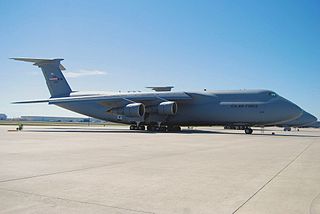
The 433rd Airlift Wing, sometimes written as 433d Airlift Wing, is an Air Reserve component of the United States Air Force. It is assigned to Fourth Air Force, Air Force Reserve Command, stationed at Kelly Field Annex, Joint Base San Antonio, Texas. If mobilized, the wing is gained by Air Mobility Command.

The 437th Airlift Wing is an active unit of the United States Air Force, assigned to 18th Air Force, Air Mobility Command. It is the mission wing at Charleston Air Force Base, Joint Base Charleston, in the City of North Charleston, South Carolina.

The Air Mobility Rodeo was a biennial, international airlift competition hosted by the United States Air Force (USAF) Air Mobility Command (AMC). AMC gathers wings from active duty, reserve, and Air National Guard units from across the United States and around the world to test and improve tactics in a competitive environment. In this environment units are able to demonstrate capabilities, improve procedures, compare notes, and enhance standardization for global operations.

The 21st Airlift Squadron is part of the 60th Air Mobility Wing at Travis Air Force Base, California. It operates C-17 Globemaster III aircraft carrying out United States Air Force global transport missions, duties which involve airlift and airdrop missions as well as provision of services and support in order to promote quality of life for both soldiers and civilians in situations requiring humanitarian aid.
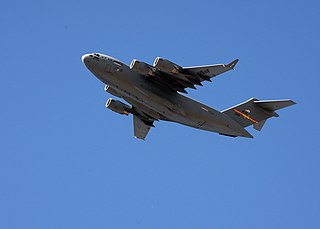
The 58th Airlift Squadron is part of the 97th Air Mobility Wing at Altus Air Force Base, Oklahoma. It operates C-17 Globemaster III aircraft training pilots and loadmasters for airlift and airdrop operations.

The 62d Operations Group is a United States Air Force unit assigned to the 62d Airlift Wing. It is stationed at McChord Air Force Base, Joint Base Lewis-McChord, Washington.

The 315th Operations Group is a United States Air Force Reserve unit assigned to the 315th Airlift Wing. The unit is stationed at Charleston Air Force Base, South Carolina. The 315th Group controls all operational McDonnell Douglas C-17 Globemaster III flying squadrons of the 315th Airlift Wing. It was activated in 1992, when Air Force Reserve Command implemented the Objective Wing organization.

The 57th Weapons Squadron is a United States Air Force unit. It is assigned to the USAF Weapons School, stationed at the McChord AFB component of Joint Base Lewis-McChord, Washington. The squadron is a geographically separated unit of the 57th Wing at Nellis Air Force Base, Nevada. The mission of the squadron is to provide Boeing C-17 Globemaster III instructional flying.

The 921st Tactical Airlift Group is an inactive United States Air Force Reserve unit. It was last active with the 433d Tactical Airlift Wing, based at Kelly Air Force Base, Texas. It was inactivated on 1 November 1994.


